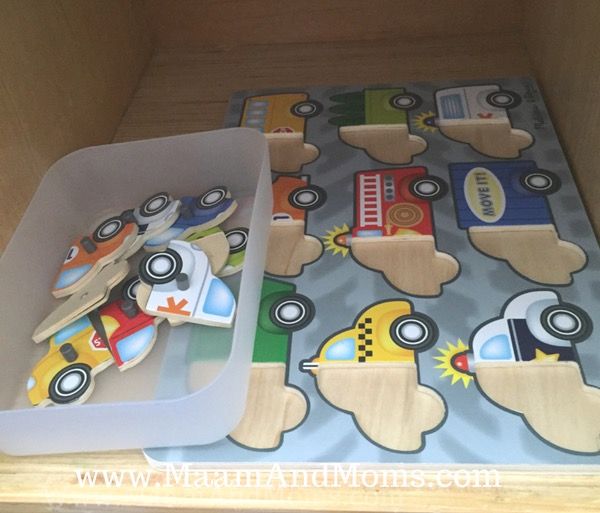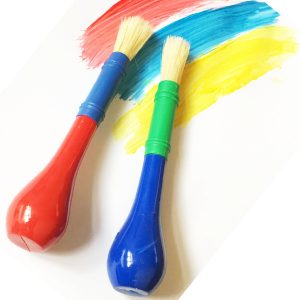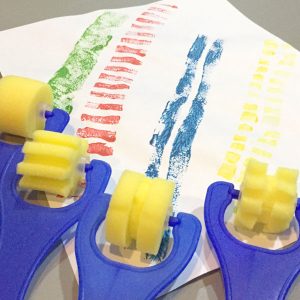
At 22 months, Little P is not a big fan of puzzles. He does not dislike it, but it’s not his choice of work most of the days. However, I continue making puzzles available in his shelf.
I started out giving him these large-knobbed peg board puzzles which would sit for weeks in his shelf without being touched. There was a day though when he was 19 months old that he suddenly got the puzzle out of his shelf and finished it in one sitting. I decided to take out the rest of the puzzles and he finished them all!


After he finished these four sets of puzzles, I returned back the puzzle to his shelf. He didn’t touch it for weeks. When I tried presenting him the puzzle, he didn’t show interest.
I decided to buy him another set of puzzle which is more complex than this which might interest him because of its challenge. This time, it has small knobs and the theme is related to his current interest.
When I showed this to him, he started out trying 2-3 pieces and done. He didn’t finish it. I replaced the large knobs in his shelf with this one because of the challenge it gave him and because of the interest he showed. However, he didn’t choose this work for days. I decided to try inviting him to do it as part of our bedtime routine (puzzle – books – prayers – sleep) or when I feel like giving him a quiet activity (because most of the time he only likes to play basketball and requires me to run with him and it tires me :p) so I can also have a rest.
…there were days when he didn’t feel like doing it. I didn’t force him. I just worked on it while he watched me.
…there were days when he will just match (correctly) but not put in the pegs
…sometimes he would insert the pieces inside his pillowcase. When he’s done with this play, we just pack away afterwards without him being forced to do the puzzle.
…sometimes he would do 2 pieces then pretend the pegs are his “phones”
…on some days like on this photo, he would just finish putting in everything

This made him happy and satisfied. This made me happy too that’s why I’m making this post. Why do we (or I ?) love this Melissa and Doug pegboard puzzle?
1. The little knobs force little P to use pincer grip which is good for his fine motor practice
2. The control of error (in Montessori, a way for the child to check his or her own work) feature allows him to work independently. The sizes of the pegs are all THE SAME so it’s easy to just fit in everything. However, as he scans on where to put the next piece, he would notice the odd ones (the incorrectly placed pieces) and correct himself without my cue.

3. This develops my self-control as a mom practicing Montessori. I have to remain an observer and let him figure things out. I don’t correct him, I don’t hurry him to finish everything. I don’t react like smile if he does it correctly or make a disapproving face when he does it incorrectly. This allows him to stay focused and concentrate doing his work.
4. He’s interested in vehicles and he can relate with most of them. He’s not into playing with his cars but he likes identifying different types of vehicles whenever we are on the road. This makes him tell stories on the side while he works on this puzzle.
For now, this will go back to his shelf. I will give him uninterrupted time to repeat it to his full satisfaction.

To have learned something for the child is only a point of departure. When he has learned the meaning of an exercise, then he begins to enjoy repeating it, and he does repeat it an infinite number of times, with the most evident satisfaction – Maria Montessori







